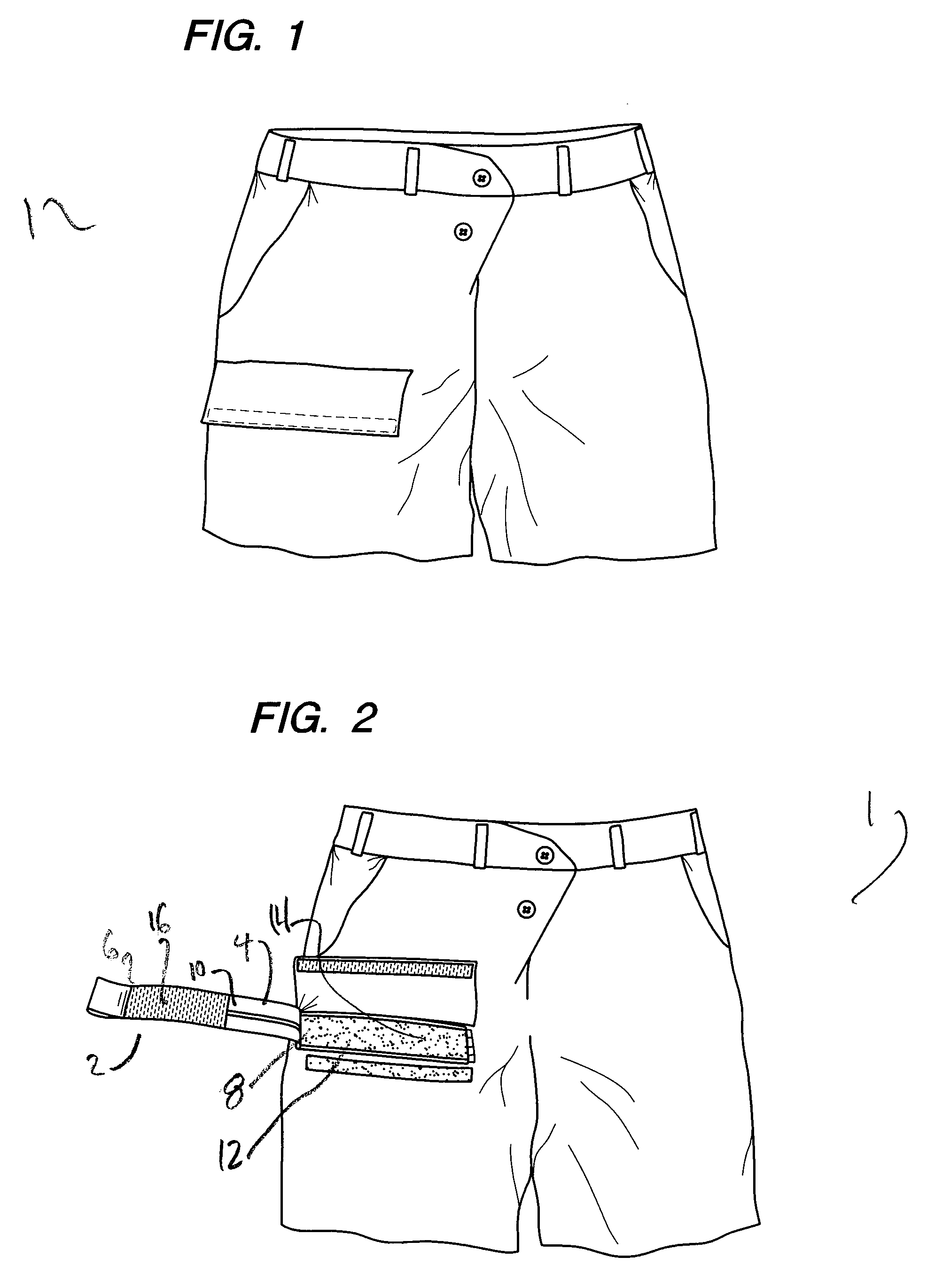Garment with affixed tourniquet
a technology of affixed tourniquet and affixed garment, which is applied in the field ofversatile trauma tourniquet, can solve the problems of multiple extremity wounds, high incidence of life-threatening injuries, and increase the consumption rate of blood products from the blood bank, and achieves the effect of simple and fast application
- Summary
- Abstract
- Description
- Claims
- Application Information
AI Technical Summary
Benefits of technology
Problems solved by technology
Method used
Image
Examples
Embodiment Construction
[0033]Referring to the above described drawing figures, the present invention provides a versatile tourniquet 2 that can be used in the field by military personnel, by police or emergency personnel, or in a clinical setting by medical personnel, or in civilian applications.
[0034]In this description, by the term reversible fastening means is meant any means, such as loop and hook-type fastener material such as Velcro® referred to herein by the terms “loop material” and “hook material,” that allows secure fastening of the tourniquet 2, but that can be easily mutually detached or the point of engagement changed to change tourniquet pressure. In the following description the terms “hook material” and “loop material” are frequently used in described embodiments of the present invention, and it will be known by those of skill in the field of this invention, and is meant in this invention, that in all cases, these two materials may be reversed without loss of function or enablement.
[0035]B...
PUM
 Login to View More
Login to View More Abstract
Description
Claims
Application Information
 Login to View More
Login to View More - R&D
- Intellectual Property
- Life Sciences
- Materials
- Tech Scout
- Unparalleled Data Quality
- Higher Quality Content
- 60% Fewer Hallucinations
Browse by: Latest US Patents, China's latest patents, Technical Efficacy Thesaurus, Application Domain, Technology Topic, Popular Technical Reports.
© 2025 PatSnap. All rights reserved.Legal|Privacy policy|Modern Slavery Act Transparency Statement|Sitemap|About US| Contact US: help@patsnap.com



